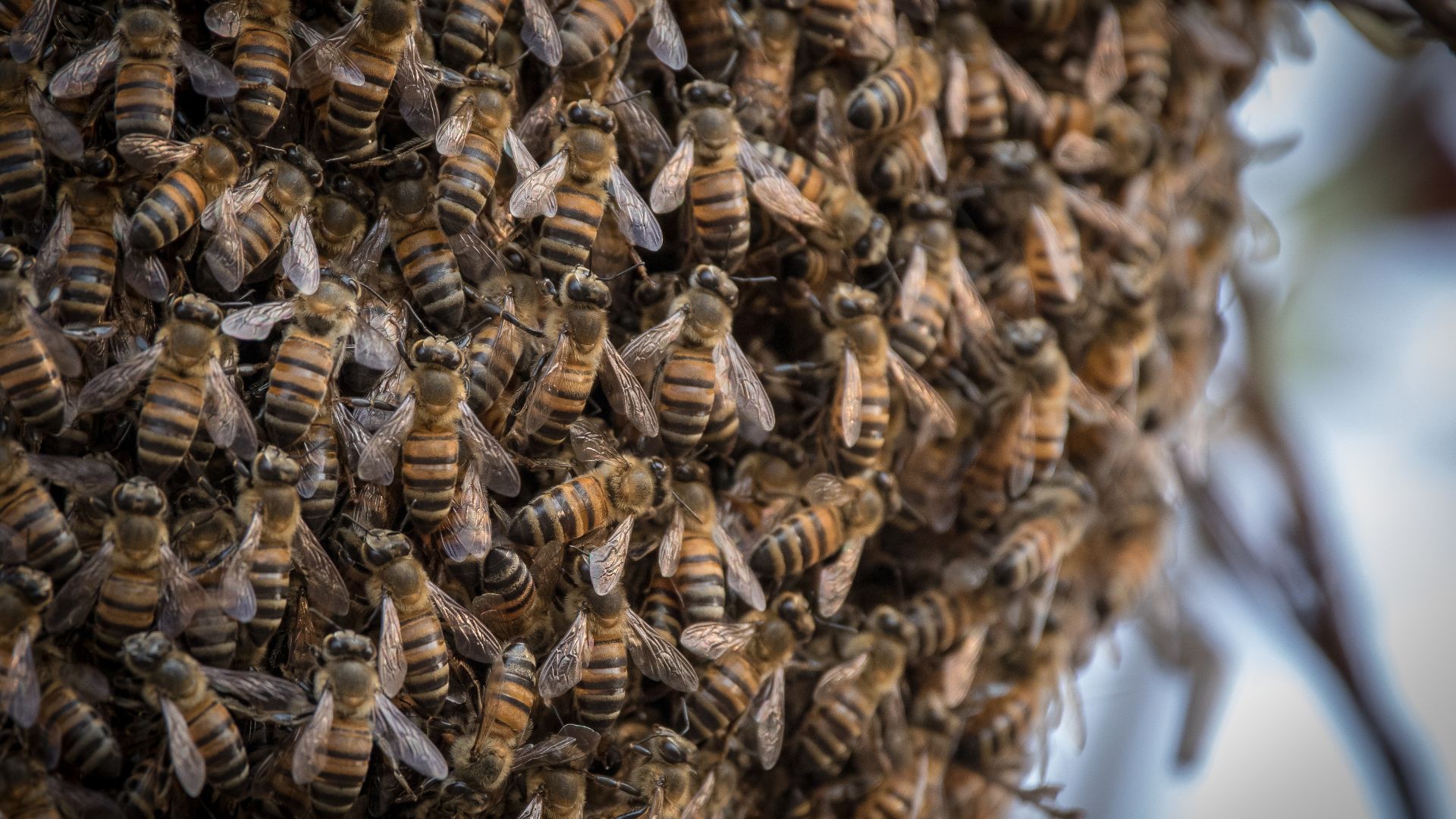
An Arizona man has survived being attacked by a swarm of 1,000 "killer" bees, local news network Arizona's Family reported.
John Fischer, 60, was out in his neighborhood in the town of Florence with his dog, Pippin, when the bees swarmed. While Pippin was able to run away, Fischer, who uses a wheelchair, was overcome by the swarm when his wheelchair tipped over. Fischer was treated at the hospital, where he was given morphine before having the stingers removed; he said his medical providers found more than 250 stingers in his body. Fischer has since been released from the hospital and is now recovering from the hundreds of stings to his arms, eyes, mouth, ears, legs and back. (Pippin reportedly sustained around 50 stings during the attack and is now slowly recovering after being treated in an animal hospital.)
Reports claim that killer bees, also known as Africanized bees, were to blame for the attack. But given the buzzing insects' terrifying nickname, how remarkable is it that Fischer survived an attack by a huge swarm?
Related: Do bees really die if they sting you?
Killer bees were first bred by a Brazilian scientist attempting to combine the vast honey yields of European honey bees with the adaptation to warmer climates of African honey bees, according to London's Natural History Museum. The hybrid bees migrated North from Brazil, through South and Central America to the U.S. Over the years, their aggressive behavior and high tendency to swarm and sting in a group has earned them notoriety and the nickname "killer bees." Contrary to popular belief, though, killer bees' venom is no more potent than that of the European honey bee.
In some cases, a single bee sting is enough to kill someone. In 2009, Ray Shaw, former Dow Jones president, died after being stung by a single bee in his garage. (It's unclear what species the bee was.)
However, individual bee stings, even from killer bees, rarely cause death. Each year, roughly 3% of people who are bitten by insects experience anaphylaxis — a severe, potentially life-threatening reaction. Anaphylaxis can occur in people who know that they are allergic to bee stings, as well as those who don't. According to a 2019 report by the Centers for Disease Control and Prevention (CDC), between 2000 and 2017, there was an average of 62 deaths annually from hornet, wasp and bee stings in the U.S. According to a recent YouGov poll, about 75% of Americans have been stung by a bee. Deaths from bee stings, therefore, are rare.
A recent publication in the journal Clinical Case Reports estimates that 50 to 500 bee stings at one time are enough to kill an adult man. The U.S. Department of Agriculture (USDA), however, estimates the fatal number to be higher, at about 1,100 for an adult and 500 for a child, based on the understanding that the average person can withstand 10 stings per pound (0.45 kilogram) of body weight. Fischer's reported 250 stings, therefore, were likely below the lethal threshold.
Fischer is not the first person to have endured such an ordeal and lived to tell the tale. In 2014, a municipal worker in Texas was stung by an estimated 1,000 killer bees and survived. Also that year, a 71-year-old woman was attacked by a swarm of 80,000 killer bees and lived after also sustaining an estimated 1,000 stings. And in 2015, an Arizona man survived 500 to 1,000 stings following an onslaught of tens of thousands of bees.
Some, however, have not survived similar attacks: A 23-year-old hiker in 2016 died following 1,000 stings, and a man in Arizona in 2021 died from hundreds of stings.
It is unclear why hundreds of stings are fatal to some people but not to others, although several factors play a role in how a person responds to being stung.
For people with bee sting allergies, their immune system response to stings can be severe and systemic — affecting the entire body, which can lead to anaphylaxis and death. Studies have shown that body weight, immune status of the victim and age can influence the severity of a person's response to a bee sting. People with bee sting allergies over age 25 are more likely to go into anaphylactic shock following a sting, in part because the allergic reaction to bee venom can grow cumulatively worse the more someone's been stung in their lifetime, according to Boston Children's Hospital.
Common nonallergic reactions to bee stings include painful swelling or redness in the affected area, while allergic reactions can include hives, nausea, light-headedness, stomach cramps, vomiting, diarrhea, low blood pressure and swelling in areas other than the sting site, according to the USDA. The main signs of the severe allergic reaction anaphylaxis are hives with difficulties in breathing and swallowing, according to Seattle Children's Hospital, which advises calling 911 if these symptoms occur.







